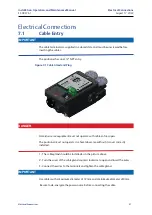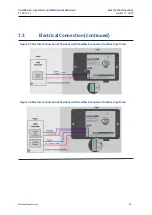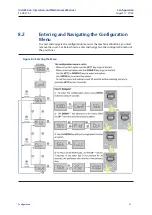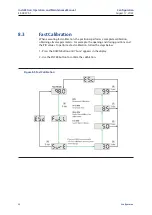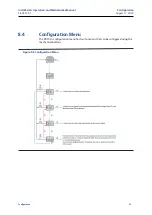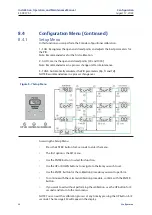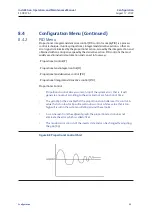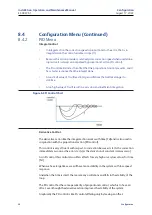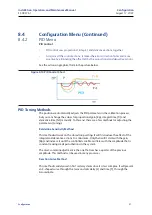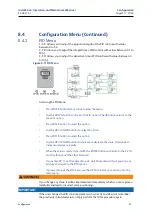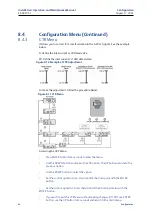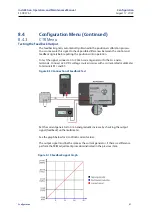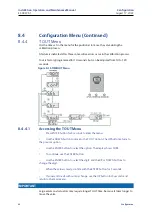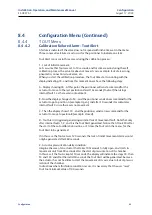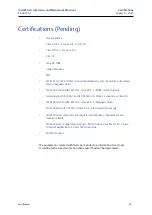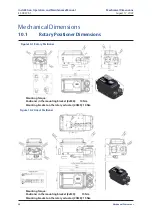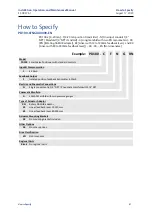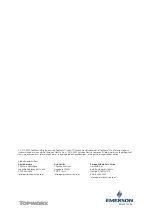
Configuration
38
Installation, Operation, and Maintenance Manual
ES-09373-1
Configuration
August 17, 2022
8.4
Configuration Menu (Continued)
8.4.2
PID Menu
PID Tuning Methods
Trial and Error Method
This is one of the most used methods because it is simple. It consists in modifying the
control actions and observing the effects on the process (as the name suggests).
However, to be able to work with this system, it is important to have knowledge of
both the process and its algorithm.
It cannot be used for open loops because it can generate instability when the gains
are too low or too high.
Another disadvantage that can occur with this method is that depending on the
amount of adjustment, it will take a lot of time to tune. Depending on the conditions,
this could impair the process.
Ziegler and Nichols Method
Ziegler and Nichols suggested a process tuning rule to get a given performance
specification, such a method took their names. It is suitable for complex plants in
which the mathematical modulus is not easily obtained, or when the plant model is
unknown.
A few rules for PID tuning are presented. These rules are based on his experiments
which works on steps and gain. They provide an estimate of the parameters of
integral time, derivative time, and proportional gain.
Sometimes this signal can generate a very large step response. In that case you will
need to do some finer tuning to get the desired adjustment.
Auto Tuning Method
This method is an improvement of the Ziegler and Nichols method. The proportional
gain, derivation, and integration variables are calculated automatically. The data for
the calculations is usually obtained from the reaction curve, causing a step-shaped
disturbance.
The PD100 firmware is the result of years of experience in controller tuning and,
in conjunction with the auto-calibration routines, provides a very close to optimal
set of parameters, but the product also allows the instrumentalist to make a final
adjustment of the parameters (Kp, Tr and Td), which can add from experience of the
valve / actuator and the controlled process.
The intention of describing PID control in this manual is only for a basic notion of
control, if you want to know more about it, please look for specific literature on
process control.
IMPORTANT




